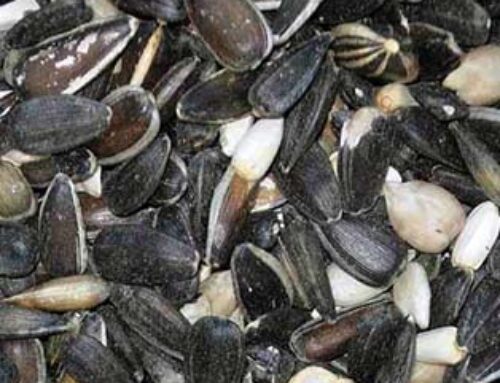As the summer winds down and the summer visitors (the avian kind) begin to return to their southern homes, we find that there is still a lot of activity at our bird feeders. Around the black sunflower seed feeders, the glorious male American Goldfinches continue to brighten the day with their deep yellow and black feathers (soon to fade to dull green), young Purple Finches and Rose-breasted Grosbeaks are present in large numbers, as are the Red-breasted Nuthatches.
We believe we had a number of successful nests of these little, natty woodland nuthatches this summer, because of the numbers that are coming to the feeders, many of whom are obviously juveniles. When we sit on our front deck, we are in the flight path from the trees on the west side of the house to the feeders in the front. They zoom inches over our head or past our noses, as though we were permanent patio furniture. We shake our heads and smile every time they do this. We are easily entertained.
Red-breasted nuthatches are found from east to west across the North American continent, mainly in the northern regions where there are spruce forests. But this habitat is also found in the mountainous west, where their range extends further south than it does in the east. They are residents also of the far northern reaches of Canada, evidenced by their scientific name Sitta Canadensis.
These compact, (4.5” from beak to tail. 8” wingspan), hyperactive little birds have orangish sides and a black line on either side of the eye, with white above and below and a black stripe on top of their heads. The two sexes look very similar, but the male has a black cap, while the female’s is dark grey. The female’s underside is also a lighter buff color, but these differences are best seen by the bander who holds the bird in their hand.
Like their cousins, the White-breasted Nuthatches, the Red-breasted are able to creep up and down (headfirst)
tree trunks and even on the underside of branches. Their stiff, short tail and sharp claws are specially adapted to this kind of foraging behavior as they look for insects and their larvae, on or under the bark. The crevices in the bark serve as a wedge to hold a black sunflower seed while they hammer away at it with their sharp pointed beak. They are also known to cache wild bird seeds under the bark for later use.
This morning I was standing by one our tube feeders that has a wire enclosure around it to keep out the bigger birds and a Red-breasted Nuthatch flew in and perched on top. I was no more than two feet away. It looked at me first with one eye and then turning its head, the other. It hopped down to one of the holes in the feeder and proceeded to pick out and toss away at least five sunflower seeds, before it found one to its liking. Then it flew away with the seed in its bill.
In the spring nesting season, Red-breasted Nuthatches are catching more insects and spiders, to feed their young. They provide a better and quicker source of protein. They are adept hunters and can pluck flying insects mid-air. For most of the winter, their food consists of seeds from the cones of the coniferous trees or from people’s
feeders. Suet is one of their favorite foods in the winter months.
Most of the Red-breasted Nuthatches that are around our house will probably stay for the winter, but they are known to migrate south if winter food crops fail in the northern boreal forest, which includes spruce, fir, and hemlock.
They will nest in either pure stands of coniferous trees or mixed with deciduous trees, as is the case on our property. Mature forest with lots of old and decaying trees is preferred, because they are the ones most likely to have good nesting cavities.
These little woodland birds will not win any contests for the loveliest voice, since their song is often described as a high pitched and nasally ‘ank ank ank’ or ‘enk enk enk’, reminiscent of a tiny tin horn. Still it is a call we like to hear, because we know they will keep us company no matter how hot or cold the weather might be.
By Kate Crowley




